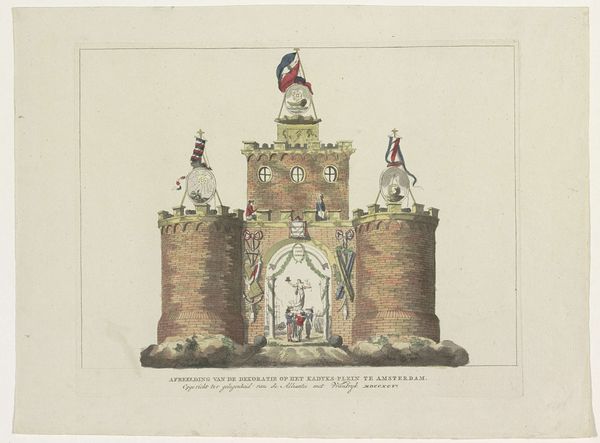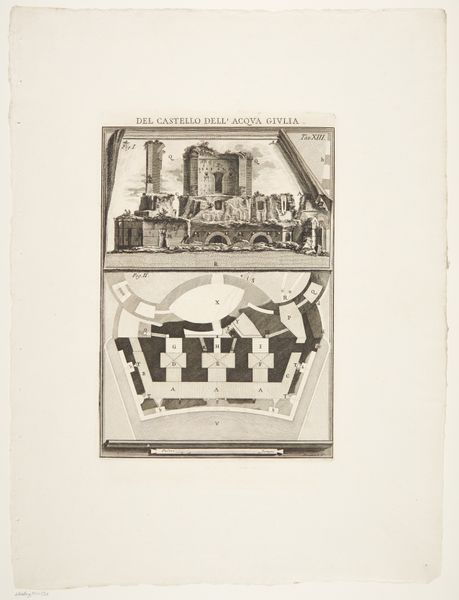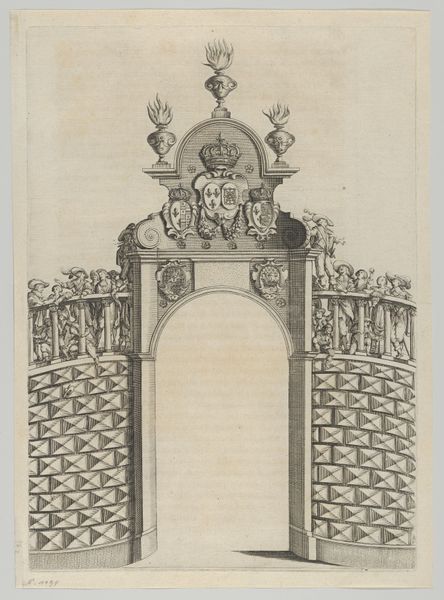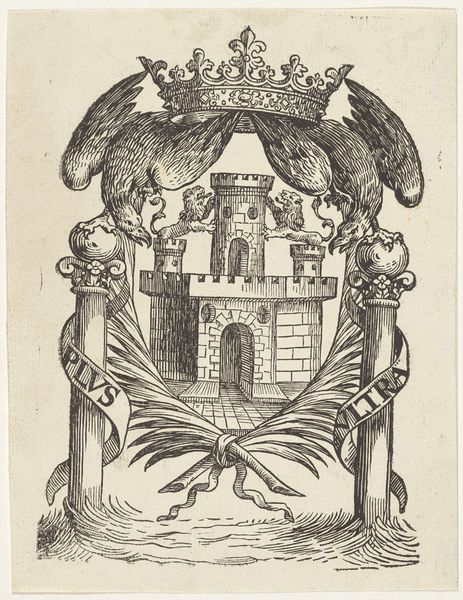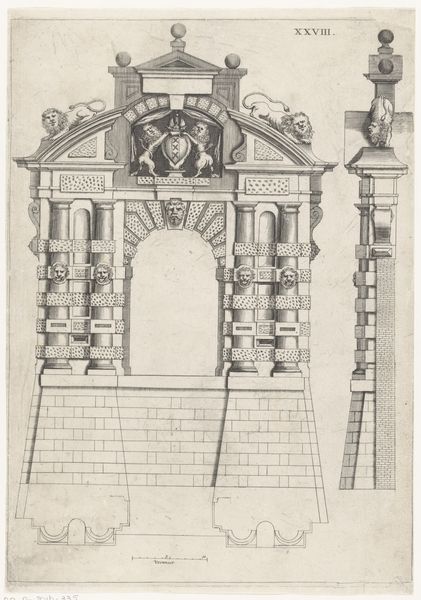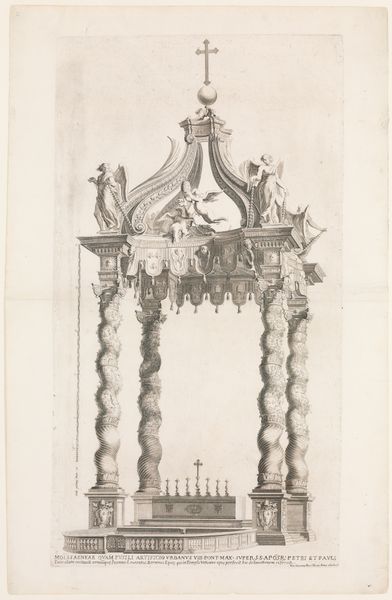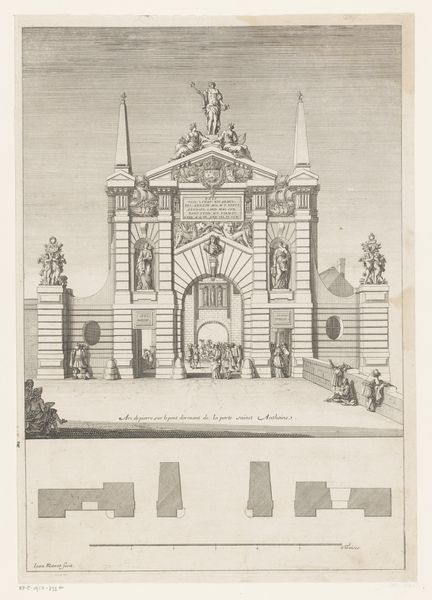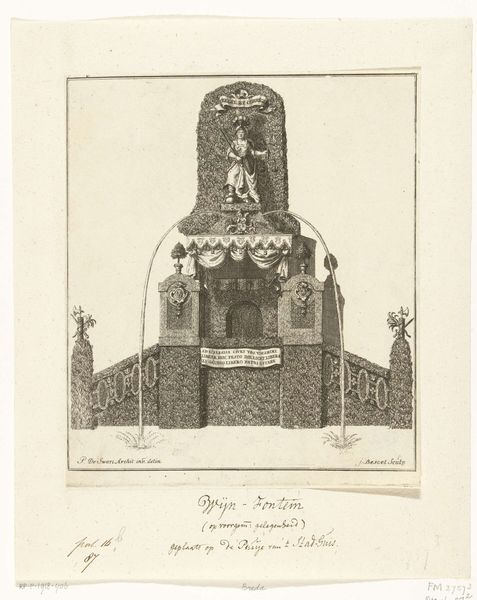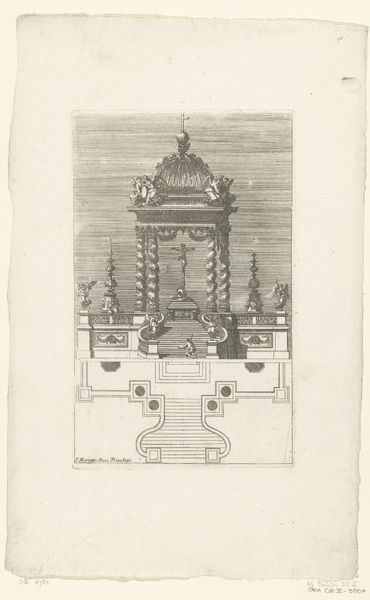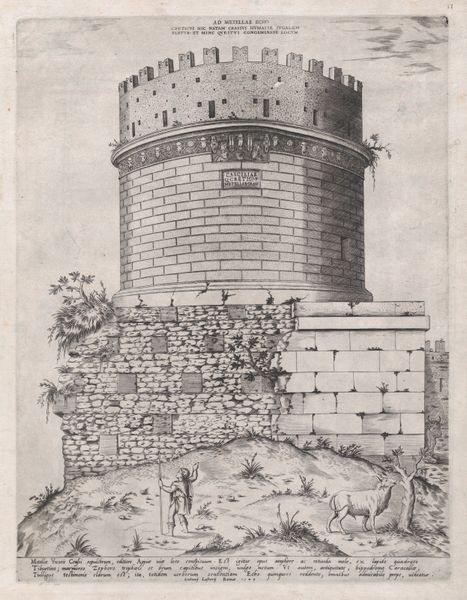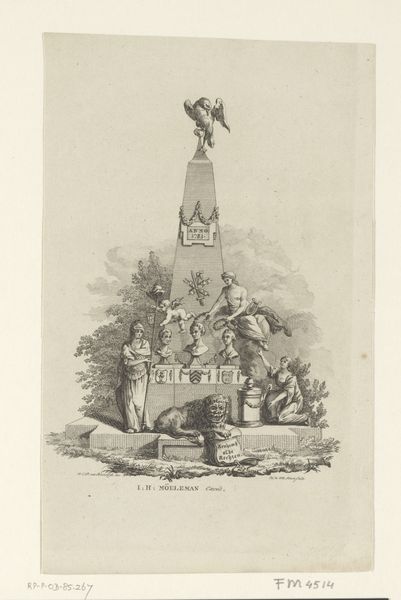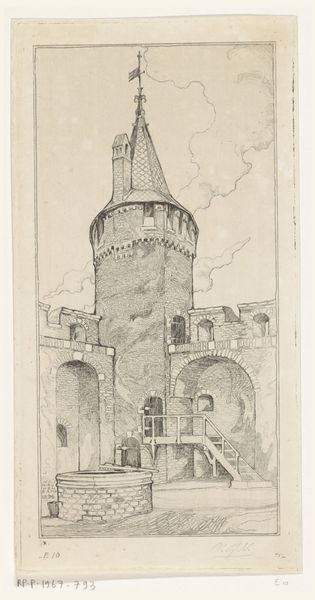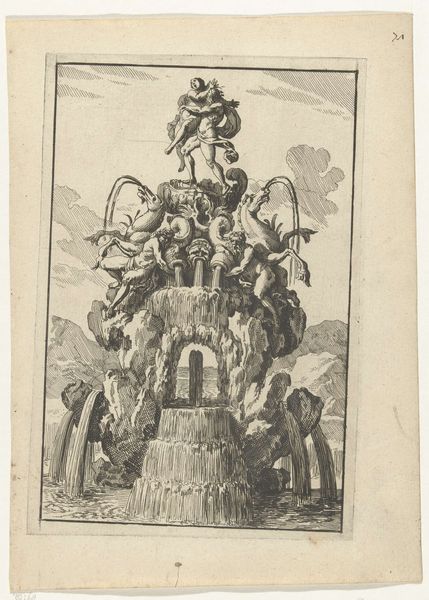
print, watercolor
#
blue ink drawing
# print
#
landscape
#
watercolor
#
sketchbook drawing
#
cityscape
#
watercolour illustration
#
history-painting
#
watercolor
Dimensions: height 257 mm, width 185 mm
Copyright: Rijks Museum: Open Domain
Curator: This delicate print presents “Algemene Wapening, decoratie op het Kadijksplein, 1795”, a watercolour illustration by A. (II) Schol. Editor: It strikes me as surprisingly cheerful for something historical; a childlike rendering almost. It's meticulously drafted and quite lovely in its colours. Curator: Note the idealized fortification; a rather optimistic symbol given the social and political turmoil of 1795. It’s less a bastion, and more of a celebratory construction. Look how figures interact with the architecture—seemingly part of the spectacle. Editor: Absolutely. The sandstone gives way to what appear to be casually arranged fieldstones at the base; the piece feels somewhat propagandistic. The artist emphasizes construction materials – not for utility but display, for celebration and therefore legitimization. What about that raised figure being cheered on? Curator: A central tableau indeed! I see here the composition's narrative crux: this carefully illuminated scene encapsulates themes of civic unity and popular approval. Notice the strategic use of light and shadow, particularly to elevate the central figure. Editor: How do the artist’s chosen mediums - watercolour and print - shape its message, do you think? I wonder about accessibility; how widely this imagery could be disseminated and to whom. Curator: That’s an important point. The relative affordability of prints would certainly have aided dissemination, ensuring its message resonated with a broader public. It brings into focus questions about the accessibility of art as a tool for political engagement, its circulation. Editor: And those accessible, mass-produced prints could themselves have become a new raw material—fodder for pasting, displaying in windows, embedding these ideals into the daily visual fabric of the citizenry, so that the labour to create them becomes diffused into the collective unconscious. Curator: Your materialist perspective yields rich insight into this print’s function within the social body. It highlights art’s power as a force for creating unity or, conversely, discord and marginalization. Editor: I find myself focusing on the intent, less on aesthetics. What Schol communicates to their intended audience by using these easily reproduced techniques? Curator: Well, looking at how this was composed does alter my sense of how people would feel about it. A vital layer added by our material analysis.
Comments
No comments
Be the first to comment and join the conversation on the ultimate creative platform.
